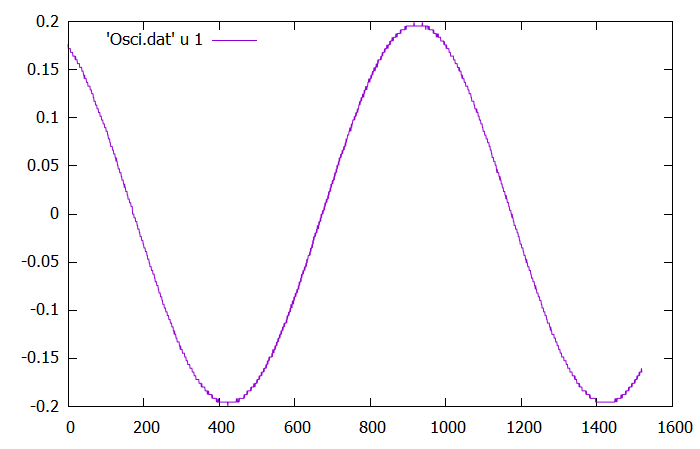This is an updated and shortened question.
Communicating with a USB-device should be easy via PyUSB. So, I'm trying to read from a USB-device (oscilloscope) using PyUSB under Win10. Apparently, the USB-driver (libusb-win32 v1.2.6.0) is installed correctly since the device is found and I get some response from print(dev) (see below).
From this I can see that the output endpoint address is 0x3 and the input endpoint address is 0x81
According to the Oscilloscope manual, I'm supposed to send :SDSLSCPI# to the device to set it into SCPI-mode and should get the reponse ':SCPION'.
However, when sending :SDSLSCPI# the monitor of the oscilloscope reproduceably will freeze and it will restart.
If I send *IDN? I should get the response ,P1337,1842237,V2.4.0->. But only if the device is already in SCPI-mode. Apparently, it is not and I get a timeout error (see below).
So, what am I doing wrong here? What information am I missing in the PyUSB tutorial. Am I using the wrong PyUSB commands/parameters or is it about missing additional drivers or is it about the hardware, either Win10 or the device hardware? Thank you for hints on how to find out what's going wrong.
By the way, what is the second value in dev.read(0x81,7)? Number of bytes to read? Well, usually I don't know how many bytes the device will send. I was expecting a command to read until a linefeed or some other terminator character within the timeout time. Where can I find "fool-proof" documentation, tutorials and examples about PyUSB?
Code:
import usb.core
import usb.util
dev = usb.core.find(idVendor=0x5345, idProduct=0x1234)
if dev is None:
raise ValueError('Device is not found')
# device is found :-)
print(dev)
dev.set_configuration()
msg = ':SDSLSCPI#'
print("Write:", msg, dev.write(3,msg))
print("Read:", dev.read(0x81,7))
Output from print(dev):
DEVICE ID 5345:1234 on Bus 000 Address 001 =================
bLength : 0x12 (18 bytes)
bDescriptorType : 0x1 Device
bcdUSB : 0x200 USB 2.0
bDeviceClass : 0x0 Specified at interface
bDeviceSubClass : 0x0
bDeviceProtocol : 0x0
bMaxPacketSize0 : 0x40 (64 bytes)
idVendor : 0x5345
idProduct : 0x1234
bcdDevice : 0x294 Device 2.94
iManufacturer : 0x1 System CPU
iProduct : 0x2 Oscilloscope
iSerialNumber : 0x3 SERIAL
bNumConfigurations : 0x1
CONFIGURATION 1: 500 mA ==================================
bLength : 0x9 (9 bytes)
bDescriptorType : 0x2 Configuration
wTotalLength : 0x20 (32 bytes)
bNumInterfaces : 0x1
bConfigurationValue : 0x1
iConfiguration : 0x5 Bulk Data Configuration
bmAttributes : 0xc0 Self Powered
bMaxPower : 0xfa (500 mA)
INTERFACE 0: Physical ==================================
bLength : 0x9 (9 bytes)
bDescriptorType : 0x4 Interface
bInterfaceNumber : 0x0
bAlternateSetting : 0x0
bNumEndpoints : 0x2
bInterfaceClass : 0x5 Physical
bInterfaceSubClass : 0x6
bInterfaceProtocol : 0x50
iInterface : 0x4 Bulk Data Interface
ENDPOINT 0x81: Bulk IN ===============================
bLength : 0x7 (7 bytes)
bDescriptorType : 0x5 Endpoint
bEndpointAddress : 0x81 IN
bmAttributes : 0x2 Bulk
wMaxPacketSize : 0x200 (512 bytes)
bInterval : 0x0
ENDPOINT 0x3: Bulk OUT ===============================
bLength : 0x7 (7 bytes)
bDescriptorType : 0x5 Endpoint
bEndpointAddress : 0x3 OUT
bmAttributes : 0x2 Bulk
wMaxPacketSize : 0x200 (512 bytes)
bInterval : 0x0
Error message:
Traceback (most recent call last):
File "Osci.py", line 15, in <module>
print("Read:", dev.read(0x81,7))
File "C:\Users\Test\Programs\Python3.7.4\lib\site-packages\usb\core.py", line 988, in read
self.__get_timeout(timeout))
File "C:\Users\Test\Programs\Python3.7.4\lib\site-packages\usb\backend\libusb0.py", line 542, in bulk_read
timeout)
File "C:\Users\Test\Programs\Python3.7.4\lib\site-packages\usb\backend\libusb0.py", line 627, in __read
timeout
File "C:\Users\Test\Programs\Python3.7.4\lib\site-packages\usb\backend\libusb0.py", line 431, in _check
raise USBError(errmsg, ret)
usb.core.USBError: [Errno None] b'libusb0-dll:err [_usb_reap_async] timeout error\n'
Update:
I got a reply from the vendor. And he confirms that the oscilloscope (or at least this specific series) crashes when sending the command :SDSLSCPI#. He will contact the developers which will back next week. OK, it seems so far no chance for me to get it to run with this specific device and the available documentation :-(.


*IDN?,however, other SCPI-commands still create a timeout error. And my suspicion is that sending:SDSLSCPI#is actually not needed. The whole thing is pretty annoying and strange... – Helsinki*IDN?. But according to documentation also the other listed commands should give some response. I need to check again next week. – Helsinki